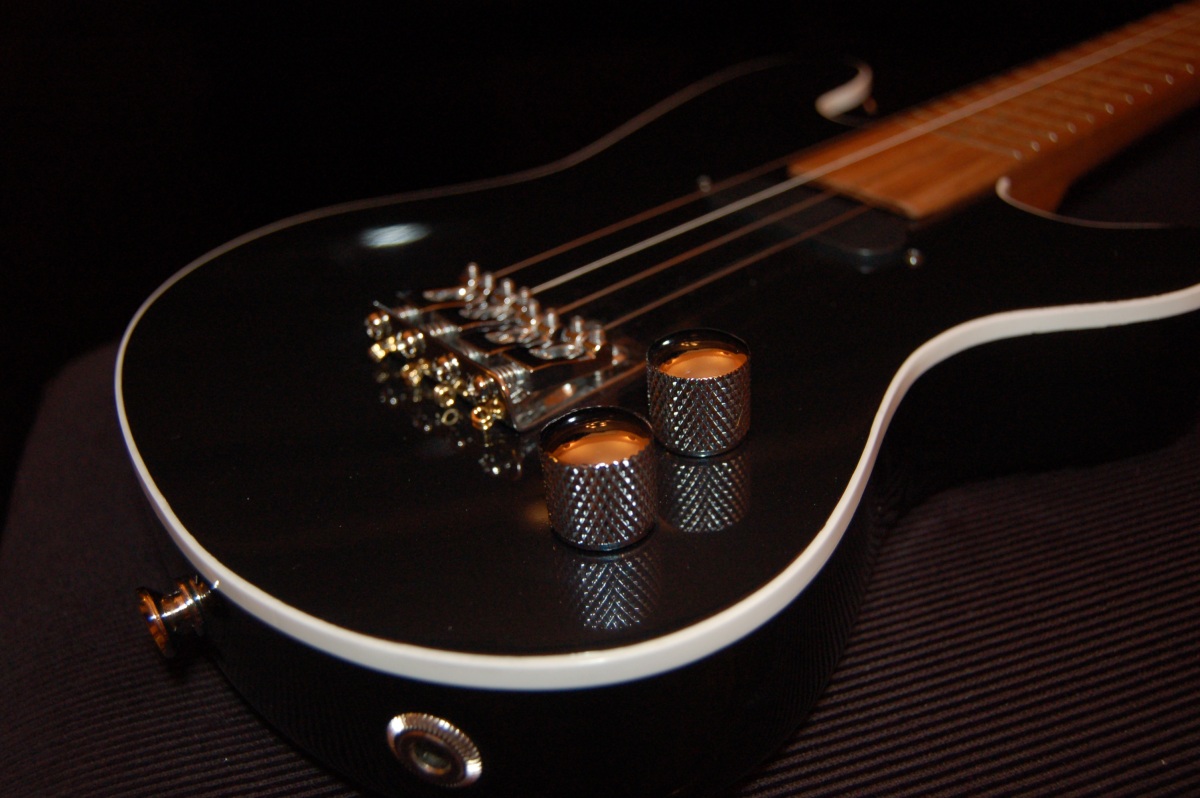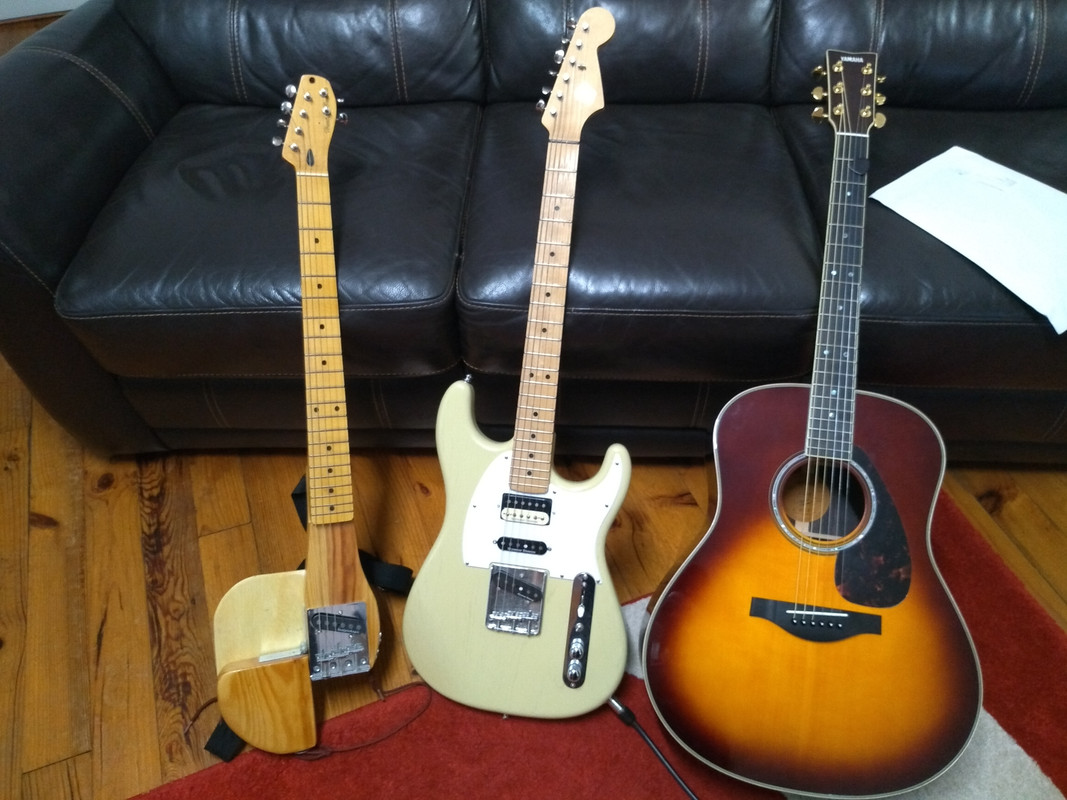Home › Forums › Chat Forum › Making an electric violin
- This topic has 17 replies, 10 voices, and was last updated 1 year ago by tillydog.
-
Making an electric violin
-
molgripsFree MemberPosted 1 year ago
A different kind of EV.
I actually bought one off eBay a while back but it’s pink and plastic which I could deal with if not for the fact that it’s such a rubbish shape that it cannot accept a neck rest and I can’t play it without one (I can barely play one with a rest but that’s another issue).
Turns out that it’s very simply made, with a piezo pickup under the bridge. So I was thinking that I could disassemble it and re-use the neck, pickup and other violin-y bits and build my own body to accept them. It turns out that you can also buy kits for this so it’s a thing.
So I have two design options on the table. One is to use birch ply in layers, with lots of bits cut out with a jigsaw to come up with something like this – it could even be several layers thick and shaped:

The other option is to 3d print something interesting. Of course my 3d printer isn’t that big so I would have to draw it in a CAD package then chop it into pieces, print it then put it back together.
Anyone tried anything like this?
simondbarnesFull MemberPosted 1 year agoAnyone tried anything like this?
No, but if you do go ahead then please post updates / pics. I love watching people build musical instruments 🙂
stumpy01Full MemberPosted 1 year agoNot done it, but considered 3D printing one a few times, just to see how it turned out.
You’ll probably find lots of examples on Thingiverse.The only thing I would be concerned about would be making it strong enough to resist the string tension.
I suspect a wooden one would sound better.
maccruiskeenFull MemberPosted 1 year agoA different kind of EV.
there has to be a gag about Range Anxiety in here somewhere.
 tillydogFree MemberPosted 1 year ago
tillydogFree MemberPosted 1 year agoFWIW, I would *definitely* go with wood, rather than 3D print – preferably real wood (even if laminated) rather than plywood. Even though it’s electric, the resonances in the neck and body still happen and add to the sound. I think a 3D printed body would be as dead as a nail, acoutically.
I made an electric ukulele a while ago. The body was made from window sill offcuts:


Chapter and verse here: https://misterg.org.uk/electric-ukulele-build-html/
molgripsFree MemberPosted 1 year agoThere are a great many electric instruments made with plastic and all sorts though.
tillydogFree MemberPosted 1 year agoThere are a great many electric instruments made with plastic and all sorts though.
My opinion, your choice 🙂
molgripsFree MemberPosted 1 year agoMy opinion, your choice
Ok you can back it up if you like, but I’ll also do some research so thanks for raising it 🙂
Earl_GreyFull MemberPosted 1 year agoI’d go with wood but mostly because I like the look and feel. I built a piezo electric solid body mandolin, and a lap steel and an electric uke with magnetic pickups – but none were anything like as nice looking as @tillydog. They worked, the intonation was good. I believe the body/neck material makes a difference to the sound in an electric instrument, particularly with piezoelectric, but nothing like as much as pickup choice and the rest of your signal chain.
I’ve seen experiments on YouTube where a bodyless guitar was built with a bridge mounted on a separate bench to the nut to compare the sustain and tone, using spectrum analysers, with a “body” instrument. From memory the observed differences we’re marginal.
I think there’s a much importance to how you feel about the instrument – a vintage stradivarius will feel nicer, and sound better because, well, it’s a vintage strad, as much as anything objective.
Make the instrument that you want, learn from making it (I made loads of mistakes), refine it and enjoy it.
Sounds like a great project!theotherjonvFree MemberPosted 1 year agoI’d go with layered ply because that looks nice.
BUT
Even though it’s electric, the resonances in the neck and body still happen and add to the sound.
I suspect a wooden one would sound better.
Like Earlgrey (must be similar video, but this is sound only) I’m going to challenge that (not in a ‘you’re wrong!’ way) but because I found it fascinating. I saw this on the guitarist’s thread a while back but it didn’t really get discussed – maybe because it might mean admitting dropping big cash on exotic makers and woods and finishes might not be that important after all. And who wants a 4×2 guitar?
CougarFull MemberPosted 1 year agoElectroBoom has some instructional videos.
Like Earlgrey (must be similar video, but this is sound only) I’m going to challenge that (not in a ‘you’re wrong!’ way) but because I found it fascinating.
I’m not a musician, but I’m sceptical from a GCSE Physics perspective. The sound from an electric guitar is created from a piece of steel moving in a static magnetic field, even if the wood is ‘resonating’ (which it probably isn’t from such a tiny mechanical input) neither the string nor pickup is going to care.
That said, I’d deffo go with wood if you’ve got the skillz. It’s surely going to look loads better.
molgripsFree MemberPosted 1 year agoElectric guitars are a little different. They use electromagnetic induction to create a voltage as Cougar says. But what I have is a piezo transducer that measures vibrations like the one in an electroacoustic guitar.
I probably will use wood because it would be far quicker. 3D printing is all well and good until you set it going and it’s going to take 24hrs to print one of a load of components.
The concern with wood is going to be weight.
tillydogFree MemberPosted 1 year agoOK, I’ll play 🙂 My experience / prejudices are mostly related to electric guitars, but from a physics point of view, I don’t see them as significantly different from an electric violin. I’ll also say that I think there’s a great deal of rubbish talked about the mythical quality:’tone‘
I’m sceptical from a GCSE Physics perspective. The sound from an electric guitar is created from a piece of steel moving in a static magnetic field, even if the wood is ‘resonating’ (which it probably isn’t from such a tiny mechanical input) neither the string nor pickup is going to care.
Using the above comment as a lead-in: It’s easy to prove that the neck vibrates with the strings – pluck a string on an (un plugged) electric guitar and then lightly touch the headstock – you will feel it vibrating. In a resonant system, a tiny input is all that’s needed to set it off. (Piezo pickups detect the vibration of the structure, rather than the string).
Ignoring pickups*, the string ‘cares’ about this in two ways:
1) Damping – energy is transferred backwards and forwards between the string and whatever is supporting it. The amount of energy lost in this process determines how quickly a plucked note dies away (sustain), or alternatively, how much energy is required from the bow to maintain a bowed note.
In the 1930s, Lester Polsfuss (stage name ‘Les Paul’) built a test rig known as ‘The Rail’to try and improve his guitar sound:

You might think, that with a ‘neck’ that substantial, the material that it’s made of wouldn’t matter very much.
Staying away from ‘tone woods’, there’s a nice presentation on the WPI site (here – you need to scroll down click it from their gallery) where they compare the response of a steel and an aluminium beam.
I’ve taken the liberty of grabbing a screenshot of their results:


Note the change in X axis scale – there’s something like a factor of 20 between the results for two different metals! (I don’t necessarily agree with their terminology, but the results are self consistent).
Ergo: the behaviour of the supporting structure has a significant influence on the character of the notes produced by the string. Materials with inherent damping properties will result in notes that die away quickly and/or require significant input from a bow to maintain – In general, I think most would agree that this is an undesirable property in an instrument, and is the reason that I, personally, would steer clear of 3D printing as I believe that the multiple voids and partially bonded layers will make it a highly damped material. It would be interesting as an experiment, though.
Perhaps more controversially, I offer:
2) Coupled resonances – the string is one vibrating system, but if you took the strings off a guitar, you could also get the neck to vibrate by hitting the headstock (in the manner of twanging a ruler held on the edge of a desk). Flexing the neck this way affects the tension on the strings, and hence the pitch of the note produced – again, easy to demonstrate by deliberately pushing or pulling on the headstock (e.g. of a guitar) while a note is sounding. Flexing of the neck modulates the note being played (vibrato). If the natural frequency of the neck (or harmonics of it) coincide with the note being played, the amplitude of the neck vibration will be greater, and it will have a more noticeable effect.
*I* submit that the effect can be heard in that Jim Lill video above (which is very good) where he compares his ‘air guitar’ to the Telecaster – To me, there is a ‘growl’ in the decaying note from the Tele that is absent from the bare strings YMMV. *I* attribute this to the coupled resonance from the neck.
Whether these coupled vibrations are desirable or not is moot – It’s possible that it could enhance or detract the musical qualities. I certainly think that this is a second order effect in comparison to damping.
*Pickups, especially magnetic pickups, are hugely important, but, for the purposes of this discussion, I regard them as the second link in the chain – they can only work with what they’re given (although magnetic pickups also exert a damping effect on the strings, so there is some feedback).
theotherjonvFree MemberPosted 1 year agoVery interesting, thanks for taking the time to write that. As a scientist i do find it fascinating and I agree there is something not quite there on his air guitar (I’m also aware listening to the video through a compressed signal on a laptop speaker is hardly the best measurement technique – plus I’m a bit deaf anyway!);
That said – I don’t think it can be denied the effects of things like materials, laquers and finishes, etc., is given far more importance than it probably has, but long live the ‘myth’ as that adds to the richness of instrument design and heritage, and the discussions musicians have.
eddiebabyFree MemberPosted 1 year agoAt bedroom volumes I think there are small differences with materials but I have two Strats. One in alder at 8.5lb, the other in swamp ash at not much over 7lb with a very thin and worn nitro finish.
In front of an amp at any kind of live volume the light guitar resonates and that is going to fed back into the strings. If was just about strings and magnets why does a 335 sound different to a Les Paul? Or a Strat with a floating trem compared with one with a blocked off trem?
It’s all part of a system and and the input to the strings comes from more than just a pick.
IMO obviously.molgripsFree MemberPosted 1 year agoGood post Tillydog. And of course in the case of a piezo pickup may well pick up vibrations directly from the body it’s embedded in.
The big question of course is wether or not the acoustic characteristcs of the solid wooden body will sound nice or not.
Plenty of fibreglass electric violins for sale, or other materials, plenty of solid guitars as well. But at least in the case of guitars they are solid heavy objects and probably damp vibrations much less than a semi solid 3d printed structure would.
Another option might be to 3d prong a mould and use it to cast something out of appropriate resin. But that would take even longer than wood which would take a few hours, and still result in a heavy object.
EdukatorFree MemberPosted 1 year agoeven if the wood is ‘resonating’ (which it probably isn’t from such a tiny mechanical input) neither the string nor pickup is going to care.
You’re clearly not a guitarist, Cougar.
There are lots of Youtubes comparing the sounds from different tone woods used to make elctric quitars, they do sound different, hollow bodied ones sound very different. The size and shape of the body makes quite difference. One Youtuber progressively cut the body of the guitar away to leave just a plank, recoeding the sound at each stage. The body vibrates and that vibration is transfered back to the string adding harmonies to the string movement and sustaining its movement.
I’ve made myself a travel electric guitar which is just the central plank. It has a very precise and hard metalic sound compared with my solid body guitars and radically different from my semi-hollow thinline Telecaster.
Three guitars with passive pickups, radically different sounds:
 tillydogFree MemberPosted 1 year ago
tillydogFree MemberPosted 1 year agoThe big question of course is wether or not the acoustic characteristcs of the solid wooden body will sound nice or not.
There’s only one way to find out 🙂
(I think it’d be a fairly safe option. Something like carbon fibre would be the ‘interesting’ option, but not so easy to build.)
In front of an amp at any kind of live volume the light guitar resonates…
Absoluely! – I’d meant to mention acoustic feedback, but forgot.
It is all too easy to get bogged down with over-analysing this sort of thing – make something and see what it sounds like 🙂
You must be logged in to reply to this topic.
